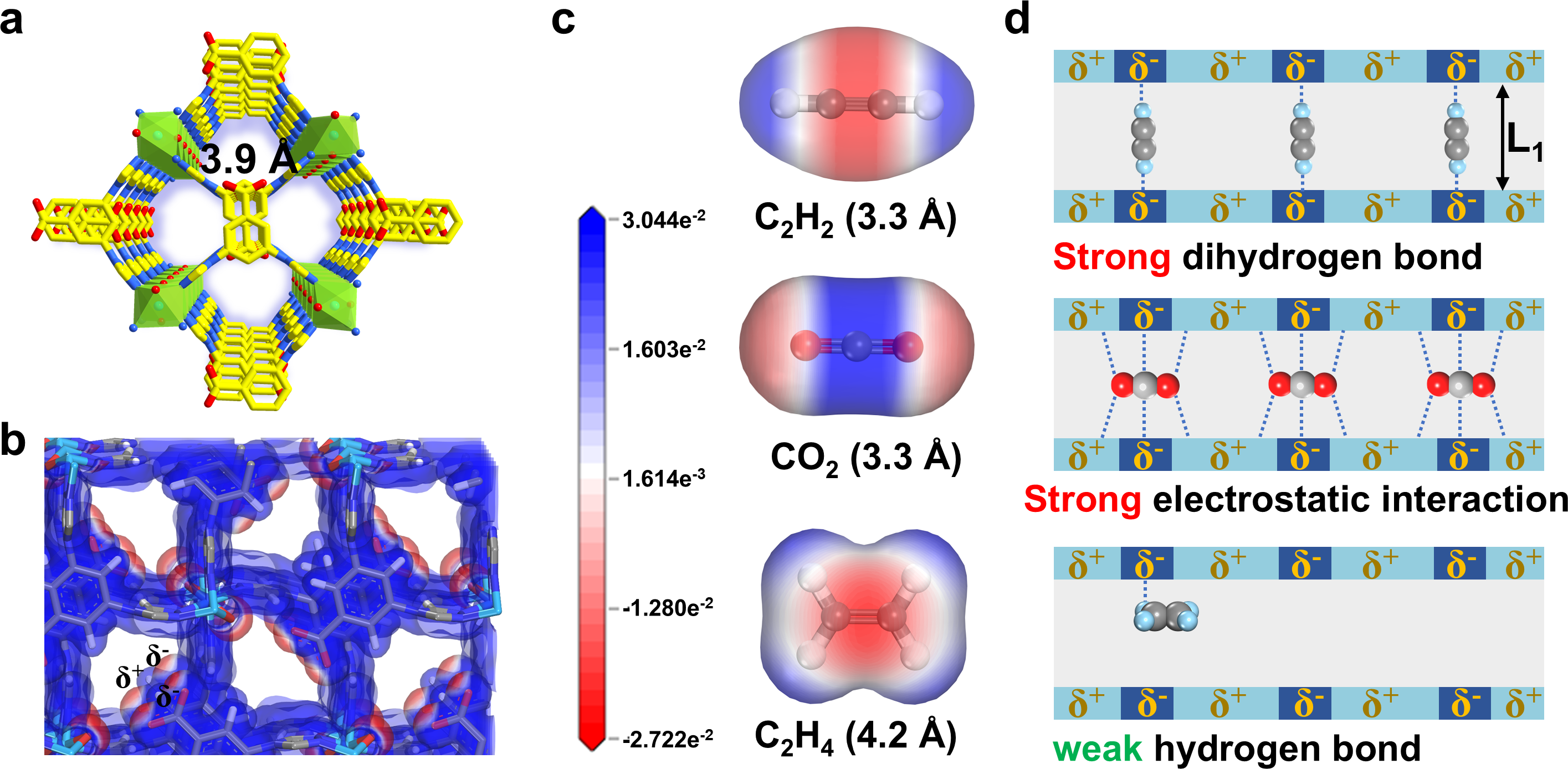Ethylene (C2H4) is the highest volume product in the petrochemical industry, which is generally produced from the steam cracking of hydrocarbons or partial combustion of natural gas, inevitably resulting in extra gases including acetylene (C2H2) and carbon dioxide (CO2). Deeply removing C2H2 and CO2 to produce polymer-grade (99.95% purity) C2H4 is greatly important in industry since the extra gases can reduce the quality of polyethylene commodities and a trace amount of C2H2 can poison the Ziegler-Natta catalyst. At present one-step purification of C2H4 from ternary CO2/C2H2/C2H4 mixture is still a great challenge in the chemical industry, since few materials have both high C2H2/C2H4 and top-level CO2/C2H4 selectivity simultaneously.
In a study published in Angewandte Chemie International Edition , Prof. WU Mingyan and Prof. CHEN Qihui from Fujian Institute of Research on the Structure of Matter, Chinese Academy of Sciences, reported an ultramicroporous material FJI-H38 with adaptive pores and abundant N/O binding sites, realizing one-step C2H4 purification from C2H2/C2H4/CO2 mixture.
The researchers found that the abundance of aromatic rings and the high-density carboxylate oxygen atoms distributed on the pore surface of FJI-H38, which provide C2H2 and CO2 preferred environment simultaneously. The adsorption experiment shows that FJI-H38 shows excellent trace C2H2 (54.03 cm3cm-3) and CO2 (76.77 cm3cm-3) trapping capability at 0.01 bar and 298 K. Therefore, FJI-H38 exhibits top-level C2H2/C2H4 selectivity and highest CO2/C2H4 simultaneously.
Dynamic breakthrough experiment confirms polymer-grade C2H4 (99.95%) with record-high productivity can be successfully obtained in one step from ternary C2H2/CO2/C2H4 mixture under various conditions.Even at 318K, the separation performance of FJI-H38 has no obvious decrease, which has never been seen in the materials previously reported.
Gas-loaded single-crystal X-ray diffraction experiments demonstrate such excellent separation performance is due to the adaptive recognition of C2H2 and CO2 by FJI-H38 through the synergistic effect of appropriate pore size and the match of electrostatic potentials, where C2H2 and CO2 can be anchored by the O/N and aromatic hydrocarbons sites. In contrast, since the molecular size of C2H4 is too big to perfectly match with the pore size and the electrostatic potentials, the C2H4 molecular can’t be tightly captured by FJI-H38.
This study represents a significant step toward one-step C2H4 purification from the multi-component mixture and the synergistic effect of appropriate pore size and the match of electrostatic potentials will significantly facilitate the designed synthesis of porous materials for challenging energy-saving gas separation.

A flexible metal-organic framework possesses appropriate pore size and the match of electrostatic potentials on its pore surface, realizing one-step C2H4 purification from C2H2/CO2/C2H4 mixture.(Image by Prof. WU’s group)
Contact:
Prof. WU Mingyan
Fujian Institute of Research on the Structure of Matter
Chinese Academy of Sciences
Email: wumy@fjirsm.ac.cn
Keywords: Ethylene purification, ternary mixture, metal-organic frameworks, one step separation
Published Paper Title:One-Step Ethylene Purification from Ternary Mixture with Adaptive Recognition Sites
Link:https://onlinelibrary.wiley.com/doi/abs/10.1002/anie.202423496